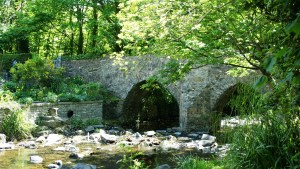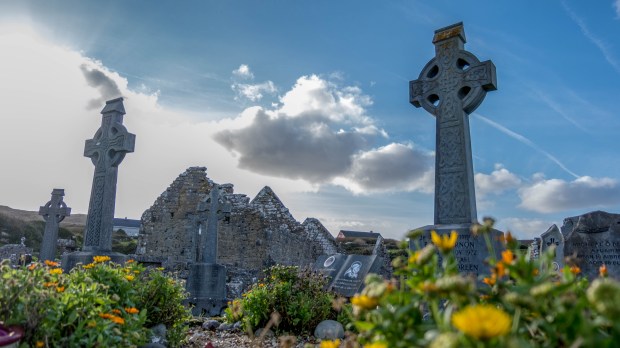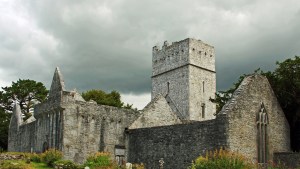West of the western shores of Ireland, near Galway, one finds the Aran Islands. One of those islands, Inishmore (Inis Mór in the original Gaelic), is home to Na Seacht Tempaill: the Seven Churches.
Since its very inception, back in the 7th or 8th century, the Na Seacht Tempaill complex was for centuries one of the largest monastic foundations in western Ireland and an important pilgrimage destination.
There are three different theories that try to explain why the site is called Seven Churches –especially considering there are really only two churches there: Teampall Bhreacán and Teampall an Phoill.

The largest and most complete of the two ruins is the first one, Tempall Bhreacán (which translates “St. Breacan’s Church”), named after the oldest of all the local saints of County Clare, St. Breacan – whose grandfather, according to tradition, had been baptized by St. Patrick himself.
The second church, the Church of the Hollow (Teampall an Phoill), was built much later (around the 15th century) and is notably smaller than St. Breacan’s.
The most common theory is that the name alludes to the number of structures found among the ruins of these two churches. Some of these structures are said to be the graves of seven saints that are indeed marked with ancient Celtic crosses. Others, however, claim that the name refers to an ancient Roman pilgrimage trail that included seven churches, and that ended in Inishmore. This theory is somewhat archaeologically backed up, since surrounding the churches are the ruins of what are believed to have been some dwellings in which pilgrims would have stayed.
Nowadays, the ancient ruins of Na Seacht Tempaill are open to pilgrims and occasional tourists, and remain an active graveyard holding not only the (supposed) remains of those seven early Irish saints, but also those of contemporary locals.



